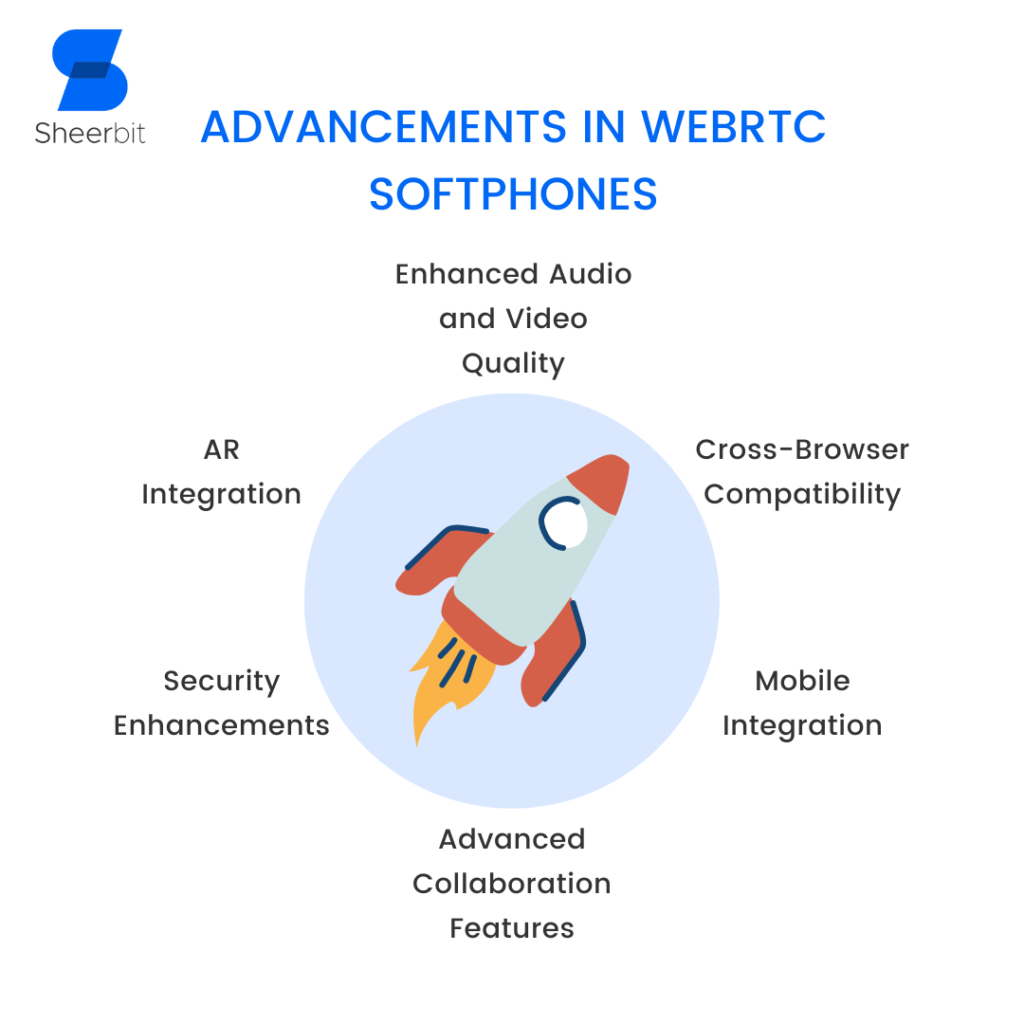WebRTC, or Web Real-Time Communication, stands out as a powerful force, bringing about revolutionary changes in how we interact and communicate online in the rapidly evolving field of communication technology. WebRTC Softphone Advancements, which was once intended to be an open-source project, has grown to be an essential component of contemporary digital interactions. Its primary function is to provide instantaneous communication via web browsers, eliminating the requirement for extra plugins and bringing in a new era of seamless connectedness. WebRTC has gained widespread adoption and established a collaborative atmosphere where developers and innovators continuously contribute to its progress since it is an open standard.
The most recent and important chapter in the WebRTC saga has been unveiled with the amazing advancements in WebRTC softphones. With the help of WebRTC, these software-based phones provide users with an interactive voice and video communication platform. WebRTC softphones have become the forefront of next-generation talks because of the incredible progress in this field.
In addition to improving communication quality, this blog article explores how the latest advancements in WebRTC softphones radically change the nature of our virtual interactions. Join us as we travel through this exciting new age. By examining the subtle nuances of these developments, we are on the verge of a revolution in communication. WebRTC softphones will be crucial in shaping the direction that digital discussions go in the future.
The Evolution of WebRTC Softphones:
Let’s go over the basics once again before exploring the innovations. Since its launch, WebRTC—an open-source initiative that facilitates real-time communication using web browsers—has changed the game. Its extensive acceptance has been spurred by its ability to deliver peer-to-peer communication of excellent quality without requiring extra plugins.
WebRTC has easily combined with softphones, which are software-based phones that use internet protocols for audio and video communication, to create a dynamic and adaptable communication tool called the WebRTC softphone.

Advancements in WebRTC Softphones:
1. Enhanced Audio and Video Quality:
The significant improvement in audio and visual quality is the primary development in WebRTC Softphone Advancements. Better codecs and compression algorithms have enabled users to communicate with perfect clarity, even in low-bandwidth situations.
2. Cross-Browser Compatibility:
WebRTC softphones were occasionally limited in their early phases by problems with browser compatibility. Recent developments have resolved these issues, guaranteeing a consistent experience across the main web browsers. Cross-browser interoperability of WebRTC softphones increases their usability and accessibility.
3. Mobile Integration:
Mobile communication is on the rise due to the widespread use of smartphones. In response to this trend, WebRTC softphones have made user interfaces more mobile-friendly. The same excellent communication is now available to consumers on smartphones, encouraging mobility and always-on connectivity.
4. Security Enhancements:
In the digital era, security is paramount, particularly regarding real-time communication. The improvements in WebRTC Softphone Advancements include robust security features, including end-to-end encryption, which protects conversations from attacks and guarantees user privacy.
5. Advanced Collaboration Features:
WebRTC softphones are becoming more than just voice and video phones; they are all-encompassing collaboration solutions. The seamless integration of features like file transfer, screen sharing, and collaborative document editing enhances the smooth functioning of virtual meetings and cooperation.
6. Augmented Reality (AR) Integration:
WebRTC softphones are integrating AR components into their user interfaces as AR technology continues to advance. The ability to communicate augmented reality material in real-time creates opportunities for improved virtual meetings and conferences.
The Future of WebRTC Softphone Advancements:
In the long run, WebRTC softphones have even more promise. More ground-breaking developments are anticipated as a result of continued research and development in fields like artificial intelligence, 5G connectivity, and Internet of Things (IoT) integration.
Conclusion:
Finally, the creation of WebRTC softphones marks a critical turning point in the history of online communication. The improvements covered above go further into virtual collaboration possibilities while improving the security and quality of talks. There’s no denying that the WebRTC softphone era is setting the stage for a more dynamic and interconnected digital future as we negotiate this revolutionary terrain. Your next-generation dialogue is waiting for you if you embrace the revolution.
Now that we’re about to enter this fascinating new phase of communication technology, it’s time to realize the possibilities of WebRTC softphones. Discover the latest features, improved security, and seamless collaboration provided by next-generation WebRTC softphones to improve your communication experience. Discover the conversation’s future by contacting Us!





